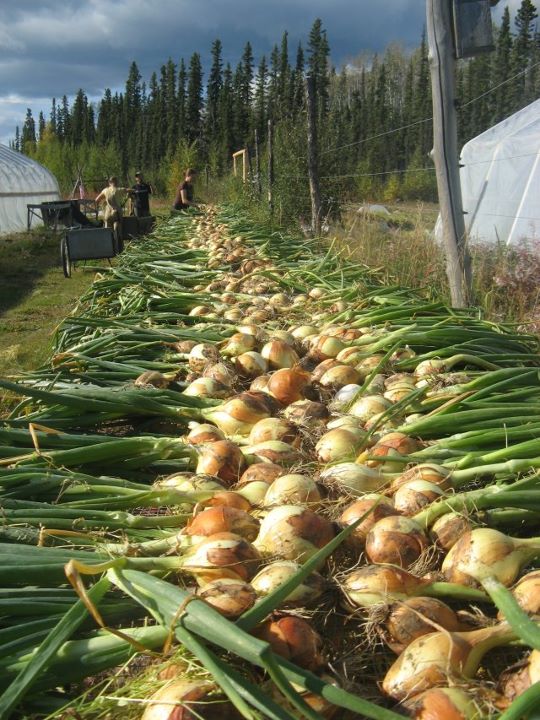Gardeners and farmers around the Interior have pretty much shut down for the winter after a cool, rainy, and for many, disappointing growing season. Some growers salvaged a decent yield by diversifying their crops – and taking advantage of a late-season warm spell to do some last-minute harvesting.

Most years, there’s frost on the pumpkins right about now at the Rosie Creek Farm near Fairbanks. But not so this year. Farm co-owner Mike Emers says there’s definitely frost – but, he adds, “There are no pumpkins this year.”
Emers says pumpkins were among the crops that didn’t do so well this year at Rosie Creek, due to a quirky growing season that challenged both farmers and gardeners with too much rain and cool temperatures. Sometime, very cool.
“Not only was it cooler than normal, and wetter than normal, but we also had unexpected frost events during that time,” he said. “So it would rain, it would clear off, and we had what would be called a killing frost around the 10th or 11th of June.”
Emers says he managed to revive much his winter squash and beans, which usually are his most abundant crops, yielding about 4,000 pounds of squash and a thousand pounds of beans annually.
But a second killer frost in July ended his cultivation of the crops this year. Emers even lost half of his potato crop, which usually does OK in cool, rainy weather but this year were flooded out.
“My numbers aren’t in yet on harvest,” he said, “but I know without the squash and beans, (and) losing half of my potatoes, we’re down. A conservative estimate would be 30 to 40 percent on overall crop yield on the farm, from a normal year.”
But like most farmers, Emers always hedges his bets by planting a variety of vegetables that’ll grow well under different conditions. So he managed to salvage a pretty good yield on other crops, including onions, despite an attack of cutworms, and salad greens, some of which he’s still harvesting, and garlic, which he and one of his workers were processing last week.
“The garlic did fairly well,” he said, “because they like it when it’s moist in the springtime.”
Many other growers around the Interior reported similar results, says Steve Seefeldt. He’s the Cooperative Extension Service’s Fairbanks-area agricultural and horticultural agent.
“Some crops really benefited by the rain, the weather we had this year,” Seefeldt said. “My peas were great this year. Everybody talked about the kale and cabbage. Carrots were terrific. Broccoli did fairly well. The parsley was amazing.”
Other growers, like farmers in the Delta Junction area that cultivate grain and livestock feed, pulled-off respectable harvests due to a relatively warm September. Phil Kaspari, who runs Delta’s Cooperative Extension office, says the warm spell enabled many farmers to get in a second cutting and baling of hay after a growing season that two weeks ago looked like a total bust.
“People have been going as fast as they can through these last couple of weeks of this beautiful weather,” he said. “And, a lot of work has been accomplished, and hopefully we get a little more weather yet that’s favorable for baling. Because there is quite a little bit of second cutting crop still out there yet.”
Kaspari says that’ll help hold down the cost of hay this year. But he says it’ll still probably be somewhere around $400 a ton, at least partly because of some farmers trying to recoup some losses they suffered last year.
Tim Ellis is a reporter at KUAC in Fairbanks.




